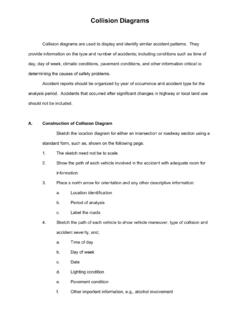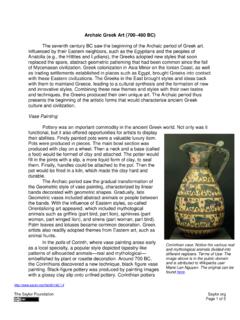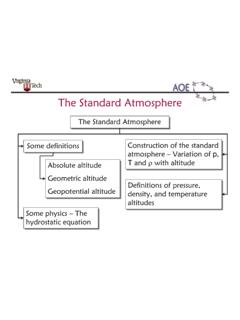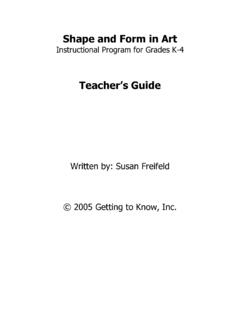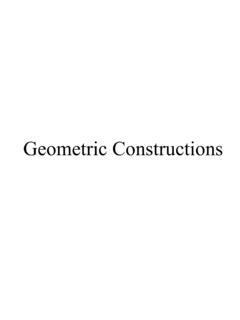Transcription of Stopping Sight Distance - Civil and Construction Engineering
1 The Kiewit Center for Infrastructure and Transportation Stopping Sight Distance Discussion Paper #1 by Robert Layton Karen Dixon Kiewit -2012/02 April 2012 Prepared for Oregon Department of Transportation Salem, OR The Kiewit Center for Infrastructure and Transportation Oregon State University 111 Kearney Hall Corvallis, OR 97331 DISCLAIMER This paper represents the research and viewpoints of the author. It draws heavily on information previously prepared for the Oregon Department of Transportation (ODOT) in the Discussion paper 8A, Stopping Sight Distance and Decisions Sight Distance , for ODOT, by Dr.
2 Robert D. Layton, The Kiewit Center for Infrastructure and Transportation, Oregon State University, September 2004. GENERAL GOAL This and other background papers are prepared to provide background, enhance understanding and stimulate discussion among individuals representing a variety of groups, agencies and interests who have concern in Oregon s highways. SPECIFIC OBJECTIVES The specific objectives of this discussion paper are to: 1. Summarize the literature and traditional knowledge regarding Stopping Sight Distance . 2. Summarize research and the current state of the art on the factors and elements of driver behavior and traffic operations that affect Stopping Sight Distance .
3 3. Review current criteria on Stopping Sight Distance within the context of access management. 4. Identify questions and issues regarding the appropriate criteria and use of Stopping Sight Distance for access management. Stopping Sight Distance 1 OVERVIEW Background The safe operation of all highway facilities, including intersections, requires the consideration of three primary elements for safe roadway operations: the driver, the vehicle, and the roadway. An understanding and consideration of each of these elements is necessary to define appropriate Sight Distance criteria. Human factors associated with the driver s performance must take account of both physical abilities and psychological influences.
4 The size, weight, and braking ability of vehicles are of particular importance for the safe operation and Stopping of vehicles. The roadway geometric design features, obstacles to Sight at the roadsides, pavement surface condition, and climatic conditions impact the safety on the roadway and Sight Distance requirements. Each of these elements and their interactions govern the development and specifications of Sight Distance criteria and standards. The determination of Stopping Sight Distance requires the definition and consideration of seven design variables: Primary Stopping Sight Distance Factors Perception-reaction time Driver eye height Object height Vehicle operating speed Pavement coefficient of friction Deceleration rates Roadway grade An important study on Stopping Sight Distance was published as NCHRP Report 400, Determination of Stopping Sight Distance (1).
5 This reference presents recommended revisions to the AASHTO Policy on geometric Design for the 2001, 2004 and 2011 Editions (2,3,4). Most of the recommended changes from NCHRP Report were included in the 2001 AASHTO Policy on geometric Design ( , 2001 Greenbook). However, a number of state DOTs have opted to retain the ft. (150 mm) height of object criterion from the 1990 and 1994 AASHTO Policies (1990 and 1994 Greenbooks), rather than accept the significant impact due to the change in height of object, from ft. (150 mm) to ft. (600 mm), for Stopping Sight Distance (5,6,7). Stopping Sight Distance 2 Content This background paper summarizes the literature, standards and traditional knowledge on Stopping Sight Distance .
6 The primary emphasis of this discussion is on the driver behavior and traffic operation conditions that influence the Distance required for drivers to stop or maneuver their vehicles safely. The discussion includes information drawn from policies, standards and current research. The primary sources of the policies and standards are the AASHTO Policy on geometric Design, 1990 Edition (English Units), 1994 Edition (Metric units) and 2001 Edition (both units), and the Oregon Highway Design Manual. The standards and criteria for Stopping Sight Distance have evolved since the 1920s. The changes in vehicle sizes and operating characteristics, driver experience and behavior, and highway technology cause a continued evolution of Sight Distance policies and standards.
7 Issues Sight Distance criteria have impact on virtually all elements of highway design, many elements of the operation/control, and recently, access management implementation. The roadway geometric design features, presence of obstacles to Sight at the roadsides and the pavement surface condition are fixed by Sight Distance requirements. The nature of traffic controls and their placement must take account of Sight Distance requirements. At times, the effects of traffic stream conditions, such as traffic queues, must be viewed from adequate Distance to stop. The provision of roadside access and accommodation of pedestrian crossings must assure a safe Stopping Distance .
8 Adequate Stopping Sight Distance must be provided on 100% of the street and highway system so a driver with the standard eye height can see an object of standard height with sufficient time to stop safely. This assumes a certain level of alertness on the part of the driver and no influence on a driver s perception and reaction due to added complexity of traffic, control and local environmental conditions. Some research has indicated that driver behavior, expectations and alertness change with the type of area and with the operating conditions on the roadway. The determination of Stopping Sight Distance requires the definition of six of the seven primary design variables defined previously.
9 It is not necessary to specify both deceleration rate and a design coefficient of friction because they both measure the required rate of slowing for the vehicle. Under some conditions the added complexity of traffic, local activities and driver expectancy may require longer times to accommodate long perception-reaction times due to situation complexity, expectations and alertness, as well as longer Distance for normal vehicle maneuvers of lane changing, speed changes and path changes, or for Stopping . The current standards for Stopping Sight Distance take these factors into account. These increased perception-reaction times and longer maneuvering distances are accommodated by decision Sight Distance .
10 Decision Sight Distance is applied where numerous conflicts, pedestrians, various vehicle types, design features, complex control, intense land use, and topographic conditions must be addressed by the driver. Stopping Sight Distance is applied where Stopping Sight Distance 3 only one obstacle must be seen in the roadway and dealt with. Decision Sight Distance is different for urban versus rural conditions, and also for maneuvers ranging from Stopping to speed, path or direction change within the traffic stream. Stopping in the context of decision Sight Distance , as distinct from Stopping Sight Distance , may be necessary to avoid a vehicle that is forced to stop for some traffic condition, such as a queue of vehicles, or roadside conflicts, such as, congestion in a driveway.

